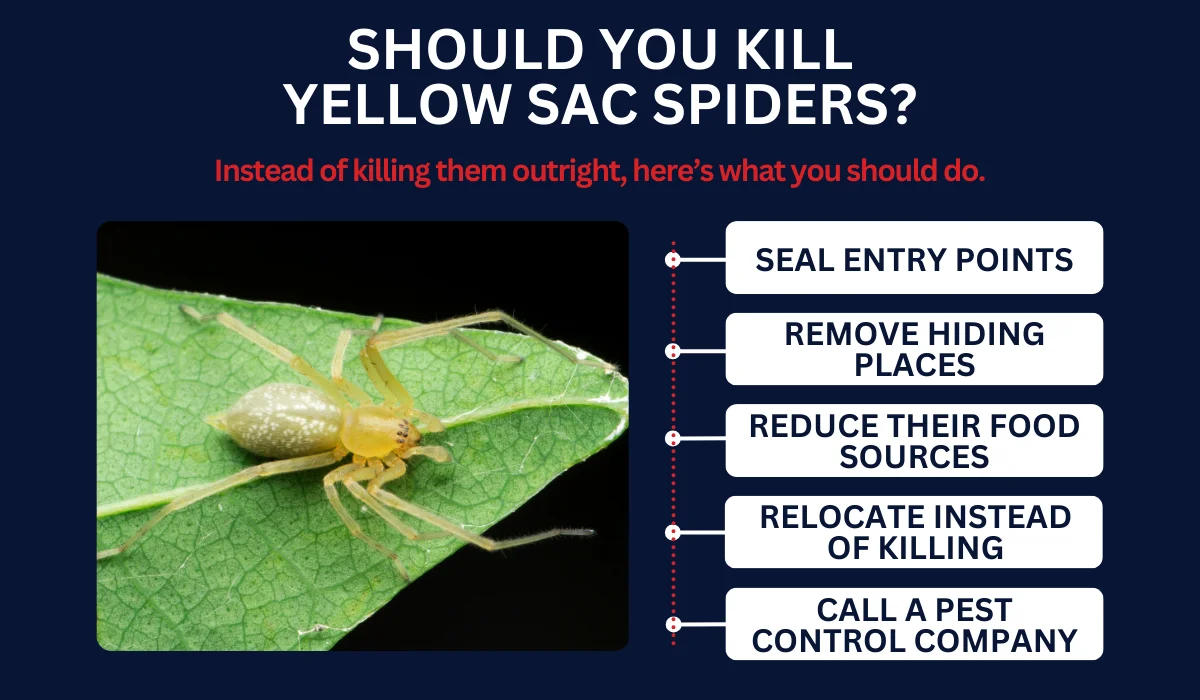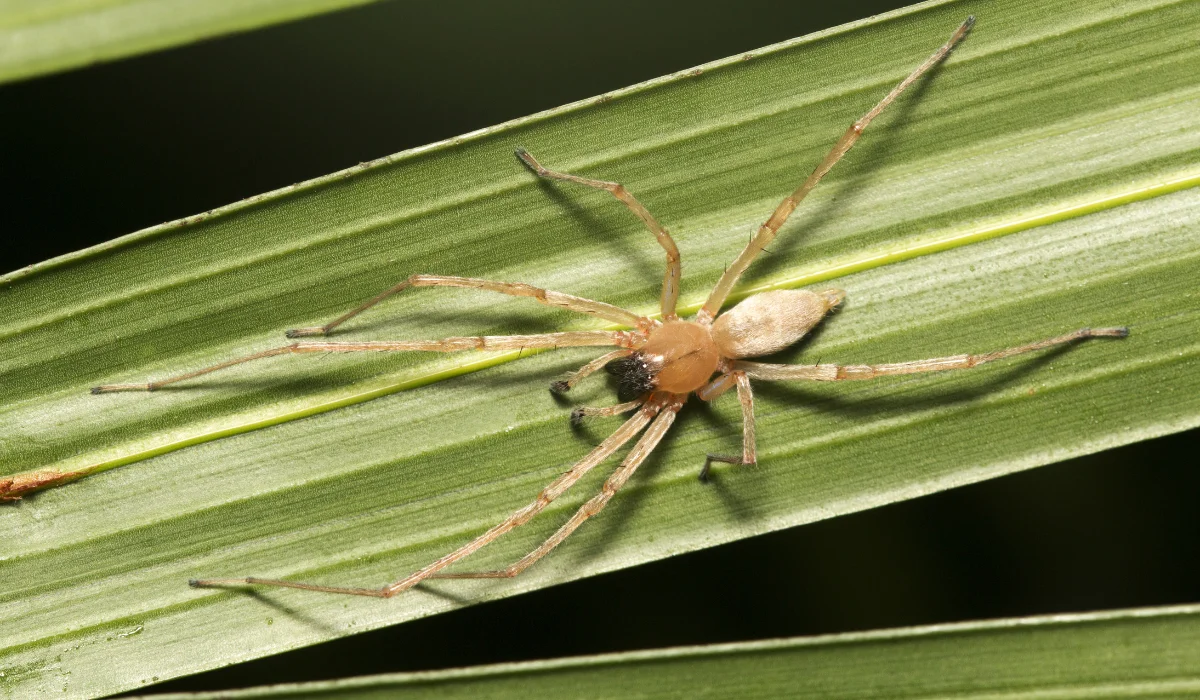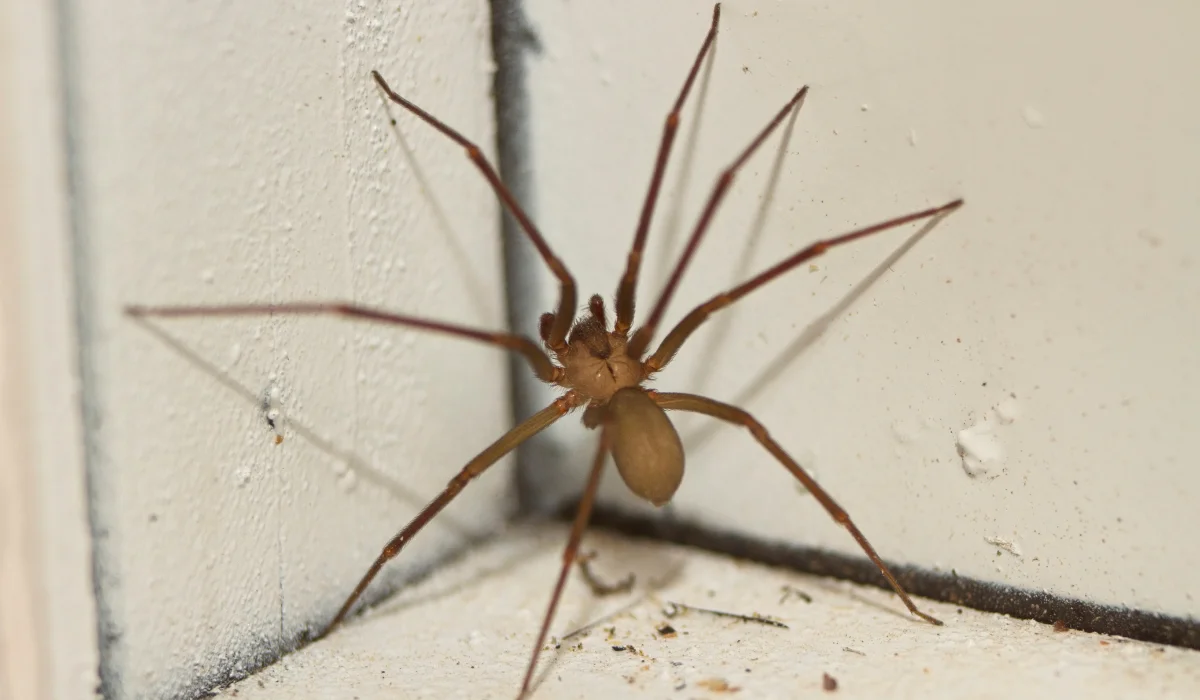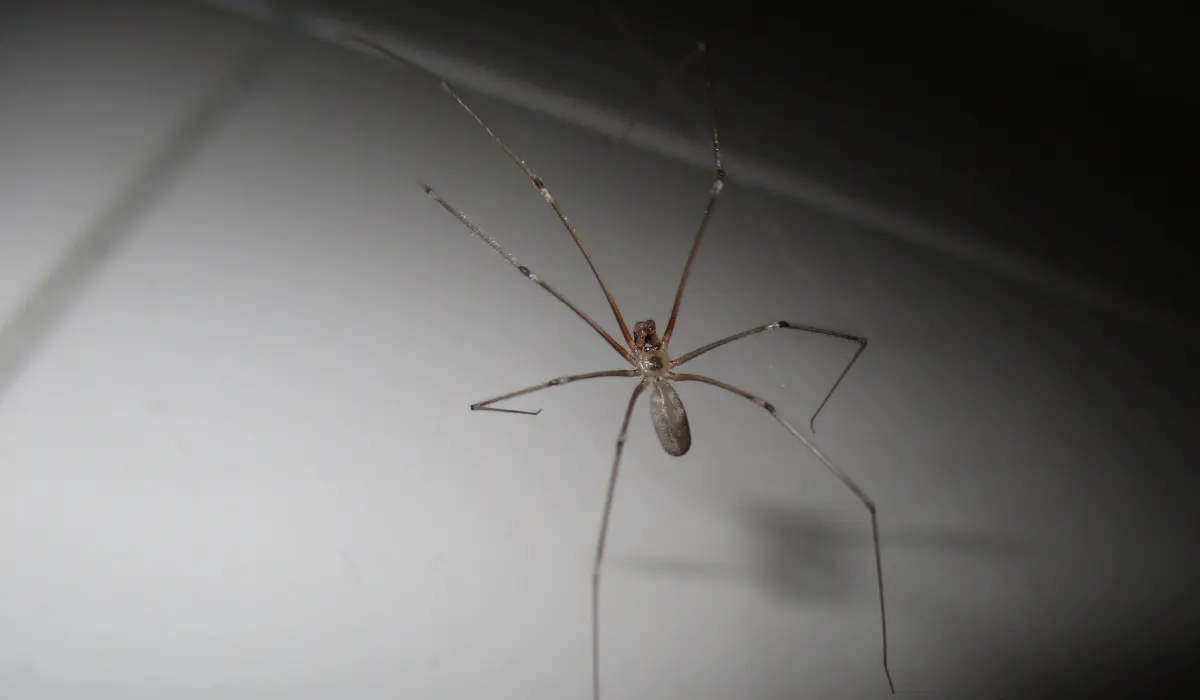If you’ve ever seen a pale yellow spider skittering across your walls, you might have encountered a yellow sac spider. These arachnids are common in North America. While they don’t pose the same threat as a black widow or brown recluse spiders, they are known for their bites.
So, do yellow sac spiders need to be killed? The answer isn’t that simple.
Let’s talk about how to get rid of yellow sac spiders the right way.
Key Takeaways
- Yellow sac spiders can bite when provoked, but they rarely cause serious medical issues.
- Sealing cracks, removing clutter, and keeping insects away can help prevent them from coming inside.
- Relocating them instead of killing them is a safe option since they play a role in natural pest control.
- Professional pest control may be needed if you notice multiple spiders, egg sacs, or signs of an infestation.
SHOULD YOU KILL YELLOW SAC SPIDERS?

Yellow sac spiders can bite when provoked, but they aren’t aggressive. Their presence alone isn’t always a problem, but if you notice a spider infestation, it may be time for spider control measures.
Instead of killing them outright, here’s what you should do.
1. Seal Entry Points
One of the best ways to prevent a spider problem is to stop yellow sac spiders from coming inside.
To keep them out, inspect your home for cracks around basements, garages, and window frames. Seal them with caulk or weather stripping to reduce the chance of an infestation.
2. Remove Hiding Places
Yellow sac spiders prefer to hide in undisturbed areas like woodpiles, crevices, attics, and corners of walls. They use these spaces as resting spots during the day before emerging to look for food at night.
Regularly cleaning and vacuuming potential hiding places like corners of rooms will help keep the numbers of this spider species down.
3. Reduce Their Food Sources
Since yellow sac spiders don’t rely on webs, they must actively hunt their food at night. They prey on a variety of food sources, including flies, moths, and even other types of spiders like hobo spiders and wolf spiders.
Their hunting behavior makes them an important part of natural pest control, but if your home has a lot of insects, you may unknowingly be providing them with an all-you-can-eat buffet.
To make your home less appealing, eliminate excess insects by sealing trash properly, keeping food stored securely, and removing standing water where bugs breed.
4. Relocate Instead of Killing
If you come across a yellow sac spider, you don’t necessarily need to kill it.
While a yellow sac spider bite can be painful—often compared to a bee sting—it is not considered medically dangerous.
However, some people may experience mild necrosis at the bite site, though it is far less severe than the tissue damage caused by brown recluse bites.
Rather than squashing them, carefully trap the spider in a container. Then release it outside, preferably in an area with leaf litter, away from your home.
5. Call a Pest Control Company for an Infestation
Yellow sac spiders are often misunderstood. While their bites can be unpleasant, they rarely cause serious necrotic lesions.
Occasional sightings aren’t cause for alarm, but seeing multiple spiders or finding egg sacs in your home could be signs of a spider infestation. These house spiders reproduce quickly, and their spiderlings will soon be on the hunt for food.
If they establish a large population inside your home, professional spider control may be necessary.
At LaJaunie’s Pest Control, we’ll inspect your home, find their hiding places, and use targeted treatments to get rid of them for good. If you’re dealing with frequent bites or a growing spider infestation, don’t wait.
Give us a call today, and we’ll take care of the problem for you!
 By: LaJaunie's Pest Control
By: LaJaunie's Pest Control 


